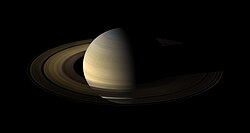Equinox
| UTC Date and Time of solstices and equinoxes | ||||||||
|---|---|---|---|---|---|---|---|---|
| year | Equinox Mar |
Solstice June |
Equinox Sept |
Solstice Dec | ||||
| day | time | day | time | day | time | day | time | |
| 2004 | 20 | 06:49 | 21 | 00:57 | 22 | 16:30 | 21 | 12:42 |
| 2005 | 20 | 12:33 | 21 | 06:46 | 22 | 22:23 | 21 | 18:35 |
| 2006 | 20 | 18:26 | 21 | 12:26 | 23 | 04:03 | 22 | 00:22 |
| 2007 | 21 | 00:07 | 21 | 18:06 | 23 | 09:51 | 22 | 06:08 |
| 2008 | 20 | 05:48 | 20 | 23:59 | 22 | 15:44 | 21 | 12:04 |
| 2009 | 20 | 11:44 | 21 | 05:45 | 22 | 21:18 | 21 | 17:47 |
| 2010 | 20 | 17:32 | 21 | 11:28 | 23 | 03:09 | 21 | 23:38 |
| 2011 | 20 | 23:21 | 21 | 17:16 | 23 | 09:04 | 22 | 05:30 |
| 2012 | 20 | 05:14 | 20 | 23:09 | 22 | 14:49 | 21 | 11:11 |
| 2013 | 20 | 11:02 | 21 | 05:04 | 22 | 20:44 | 21 | 17:11 |
| 2014 | 20 | 16:57 | 21 | 10:51 | 23 | 02:29 | 21 | 23:03 |
| 2015 | 20 | 22:45 | 21 | 16:38 | 23 | 08:20 | 22 | 04:48 |
| 2016 | 20 | 04:30 | 20 | 22:34 | 22 | 14:21 | 21 | 10:44 |
| 2017 | 20 | 10:28 | 21 | 04:24 | 22 | 20:02 | 21 | 16:28 |
An equinox is when the sun passes directly over the equator. There are two equinoxes each year. Equinox can also mean either of the two days when this happens. On these days, the nights are equal in length at latitudes L° North and L° South. The word equinox comes from two Latin words meaning "equal" and "night".
Around the day of the equinox, the length of the day is a little over twelve hours and the length of the night is a little under twelve hours. They are not exactly equal because the sun is not a point in the sky and because the sunlight bends as it comes to earth. The exact day and time when this happens depend on how far away from the equator it is being measured. They occur on or around March 21 and September 21. Solstices fall around June 21st and December 21st at odd intervals.
The equinoxes are the beginning of spring, and autumn (or fall in the US).
The time of daylight is quite easy to measure. This was done in many cultures where festivals were celebrated at the equinoxes.
Equinox Media
Related pages
References
![]()



